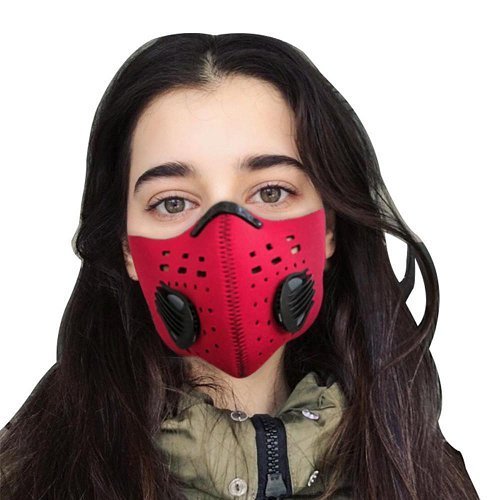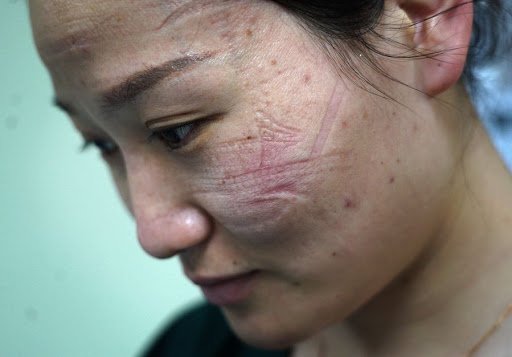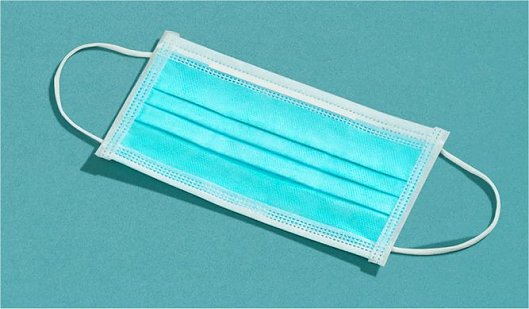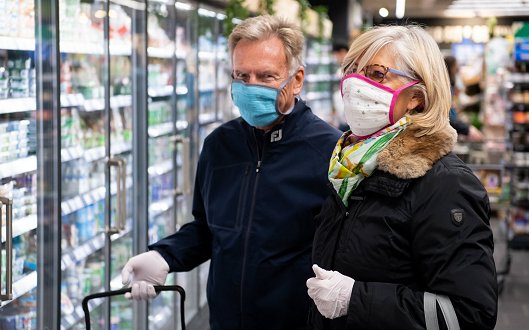This is Part Three of a set of posts called ‘Wearing a Face Mask During a Pandemic’.
Re-Useable Masks Available to Purchase:
Anti Pollution/Sports Masks:

Colourful cycling mask with vents and valves.
Anti pollution masks have been growing in popularity for some time. They are worn by cyclists and bikers and by those doing sports or jogging in polluted conditions.
These masks vary from basic mouth, nose and chin covers, to bandana style scarves, to ‘tube’ scarves, to balaclavas and to full face coverings.

Full Face Cycling Mask
Many are ornate, with pictures of animals, superheroes, skulls, and fantasy designs.
None of these masks were designed to deal with a virus and some (the scarves in particular) may be too thin/porous to be much help in providing protection. However, they should, by differing degrees depending upon material used, prevent the wearer spreading the virus when in contact with others.

Half face ‘skull’ mask/tube scarf
Anti-pollution masks can be made in a variety of materials, from cotton to velvet or suede, leather and sometimes plastic.
But some of the most popular are made with a material called Neoprene.
Neoprene is waterproof. It comes in a range of thicknesses and can be used to make a variety of fashion items as well as scuba diving equipment.
But in cycle/motorbike masks and face covers, neoprene really comes into its own as you will see if you study the many designs.
Because neoprene is not breathable, all neoprene masks should have a respirator valve (most will have 2) and many have ventilator slits (on the outside layer only).
A good anti pollution mask has an outer ‘shielding’ layer (which has valves and ventilators), plus a sturdy inner filter pad in the shape of the inner mask.

Popular price cycling mask with fitted, changeable inner filter
A good inner filter will contain around 5 layers to filter out harmful particles, allergins and smells from the atmosphere, keeping you safe from the vast majority of pollutants.
However, the manufacturers of these masks do not usually make any claims about keeping specific virus particles out.
Nevertheless, some, like the manufacturers of the top quality Respro masks, will say that their filter system will filter out large particles and some smaller ones. And this is important, because a cough or sneeze from someone with Covid-19 will contain large and medium as well as micro particles and some of these may well be filtered out by these masks. But (probably as a result of this statement on their facts page, and a rush to buy), the Respro website was temporarily closed to further orders as I typed this…

Respro Sportsta™ Mask
Scientists are researching the effect of ‘viral load’ on a person’s reaction to the Covid-19 virus. Some say there is evidence that a lower viral load may mean the likelehood of a milder case of the illness. However, there is much research to be done on this and there is disagreement as to the findings (see Note 2). Nevertheless, for those concerned about viral load, it could be suggested that the wearer of any anti-pollution mask which filters larger particles might not get such a viral overload if coughed or sneezed on by a virus carrier.
But because of the growing claims that facemasks with valves can expel virus particles into the atmosphere (see Note 1), sports and anti-pollution masks of this nature may in future not be considered suitable for wearing by the general public.
I will admit that I am still looking at anti pollution/sports masks, mainly because I love the designs. I also love that if you purchase a reasonable quality design from one of the better manufacturers, you can get a mask which will fit you well.
Another factor that I like is that these masks are mostly waterproof so they do give defence from moist particles, unlike cloth masks which are more likely to soak moist particles into the top layer.
However, manufacturer’s recomendations to use the inner filter for several times before changing is something I’m not sure about for pandemic use.
But I will research some more over time 🙂
Stretch Masks:
Neoprene is one of a range of stretchable fabrics used to make the style of face masks some are calling ‘shark masks’. These are washable masks where the stretchable fabric used extends into the ear loops also, giving a pointed ‘shark’ look from the side.
These basic stretch masks are quick to use, light to wear, and washable. They are usually made with just one layer of material and in a very basic shape. As they are very stretchy but also moldable, they often provide a good fit to a whole range of face shapes and head sizes.

A range of stretch face masks
Because they are usually one layer and have no pocket for a filter, it is debateable how much virus the ‘shark’ masks will keep out. But in their defence, the material used is usually dense (if you hold it up to the light, you should not be able to see through it). And, as with most other face coverings, they should keep virus particles in, so will help to prevent virus spread.
Dust Masks
Dust masks come in a range of shapes and sizes and resemble many different medical masks.
Dust masks were never designed to keep out virus particles. They were designed specifically to protect the wearer from dust, powders and other dangerous particles when at work.

Basic cotton dust mask
The most basic dust masks are for wearing literally when dusting or creating a dusty atmosphere. They are often made with two layers of fabric and in the same shape as surgical masks. They provide a comfortable mask, but will not filter out minute particles.
Dust Masks With Filters:
With the surge in interest in cycling wear, a number of manufacturers have produced face masks in cotton, polyester, or other light materials which are classed as dust masks, but are also advertised as light cycling wear.
Many of these masks have 2 layers of fabric, plus an inner pocket where a filter can be placed.

Dust/cycling mask with respirator valve plus example of inner filters used
Masks may or may not have a respirator valve on the outside (Personally, I have found that a respirator valve on these particular masks makes little difference, as the material used to make the masks is usually breathable. However, the valve may prevent heat and moisture accumulating in the mask when worn for an extended period).

Dust/Cycling Masks without respirator valve, showing carbon filters
Filters used in dust masks are usually PM2.5 filters (often called ‘carbon filters’ because an inner layer contains carbon). PM2.5 filters are designed to filter out particles in the atmosphere which have a diameter of less than 2.5 micrometers. These are light particles found within polluted atmospheres which can invade the lungs, so PM2.5 filters are considered effective in protecting us from many allergies and harmful atmospheric substances.
It must be noted that these filters cannot fully protect us from virus particles with a size of 0.3 microns. Nevertheless, it could be suggested that the filters could prevent large virus droplets entering the inner mask, along with part of the viral load. As with many things face mask, the scientific jury is still out on this, Covid-19 being such a new and fairly unpredictable virus.
And in any case, if these dust masks are worn correctly (ie: from bridge of nose to under the chin and fitting snuggly), they should prevent virus particles being expelled into the atmosphere when the wearer coughs or sneezes (or even talks). So they can be worn as an effective part of preventing the spread of Covid-19.
Heavy Duty Dust Masks:
Dust masks used in more particle-intensive workplaces are marked according to protection levels – from FFP1 to FFP3:

FFP1 and FFP2 Dust Masks
- FFP1 dust masks provide reasonable protection from dust and paint sprays.
- FFP2 dust masks provide excellent protection from paint, chemicals, sprays, etc, and some small particles too. These work very similarly to N95 masks and are said to provide some protection against virus particles.
- FFP3 dust masks provide excellent protection against particles of all types, including some tiny particles of the type found within virus droplets. They are usually considered to be of N95+ standard.

FFP3 Dust Mask
Some, particularly FFP2 and FFP3 level dust masks, will have breathing filter valves.
High level dust masks provide a very good level of protection, and as a result these masks are sometimes being used by health care workers who are unable to obtain FFP3 Medical Respirators.
However, the vast majority of dust masks were never made to fit the face as well as a medical mask and they were not designed specifically to filter micro particles of the size found in virus spread.
This is why, although your works mask may give you a lot of protection when worn out in public, it will never give you full protection.
But it has to be said that it is still a whole lot better individual protection than many will have.
Cloth Face Masks To Purchase:
With the sharp rise in public interest in face masks, Many clothing manufacturers, large and small, plus a range of other companies, have turned their focus to making and selling face masks.
The majority of these will be made from cotton, although some will have a special outer finish which the manufacturer claims will make them water resistant.

Pleated Cotton Face Masks – Etsy
Cotton masks to buy are made predominantly in one of two shapes: rectangular with pleats (surgical mask shape); or shaped to fit the face. Many will have a pocket for a filter (usually a PM2.5 filter, although some manufacturers make their own filters to fit their particular masks).
Cotton masks to purchase can be found on Etsy, Amazon, eBay, Craftsy, and on manufacturer’s own sites, plus you will find adverts for them all over Facebook. Online prices for this type of mask range from £5 upwards, with more exclusive fabric designs, or perhaps extras like extra filters, a bag for the mask, etc, commanding a higher outlay.

Fitted Cotton Face Masks – The Sustainable Mask – Christy Dawn
With such a wide and growing range of cotton masks available to purchase online, it would be easy to get carried away and perhaps spend money you cannot really afford on a whole range of new masks.
I will talk more about cotton masks in my next post about making your own masks and ‘face covers’, but for now, I would recommend this:
Before you spend a lot of money on a variety of cotton masks (or any mask come to that), make sure that the mask you want is:
- made in your size (face sizes vary considerably but masks not so much);
- fits well, but will give you room around your mouth and nose to breath (a tight mask you cannot breath in will soon be thrown in the bin);
- can be washed on a normal washing machine cycle (you will soon get fed up hand washing a mask which requires delicate treatment).
- With a cotton mask, I personally would also go for a mask which has at least 3 layers (one can be an insertable filter).
More on cotton masks later…
Of course to many of us, purchasing a face mask of any description may be an unattainable wish, given that a lot of us have been unable to work or obtain a full wage for some time.
So, along with the fact that our Government is telling us not to use up masks suitable for use in hospitals and social care and we are all being asked to wear a ‘cloth face covering’ when in crowded public spaces, many of us are considering making our own face masks.
The use of home-made cloth face masks is a whole other topic and I will write about it in my next post on face masks.
In the meantime, I hope that this piece has helped to clear up a few queries about the varying types of face masks you will encounter once you start looking.
But whatever type of face mask you buy, please do wear them if you possibly can. It could help us all.
Note 1: Why your N95 mask could endanger others: https://www.sfgate.com/living-in-sf/article/Why-your-N95-mask-could-endanger-others-15246318.php
Note 2: Viral dynamics in mild and severe cases of COVID-19: https://www.thelancet.com/journals/laninf/article/PIIS1473-3099(20)30232-2/fulltext























